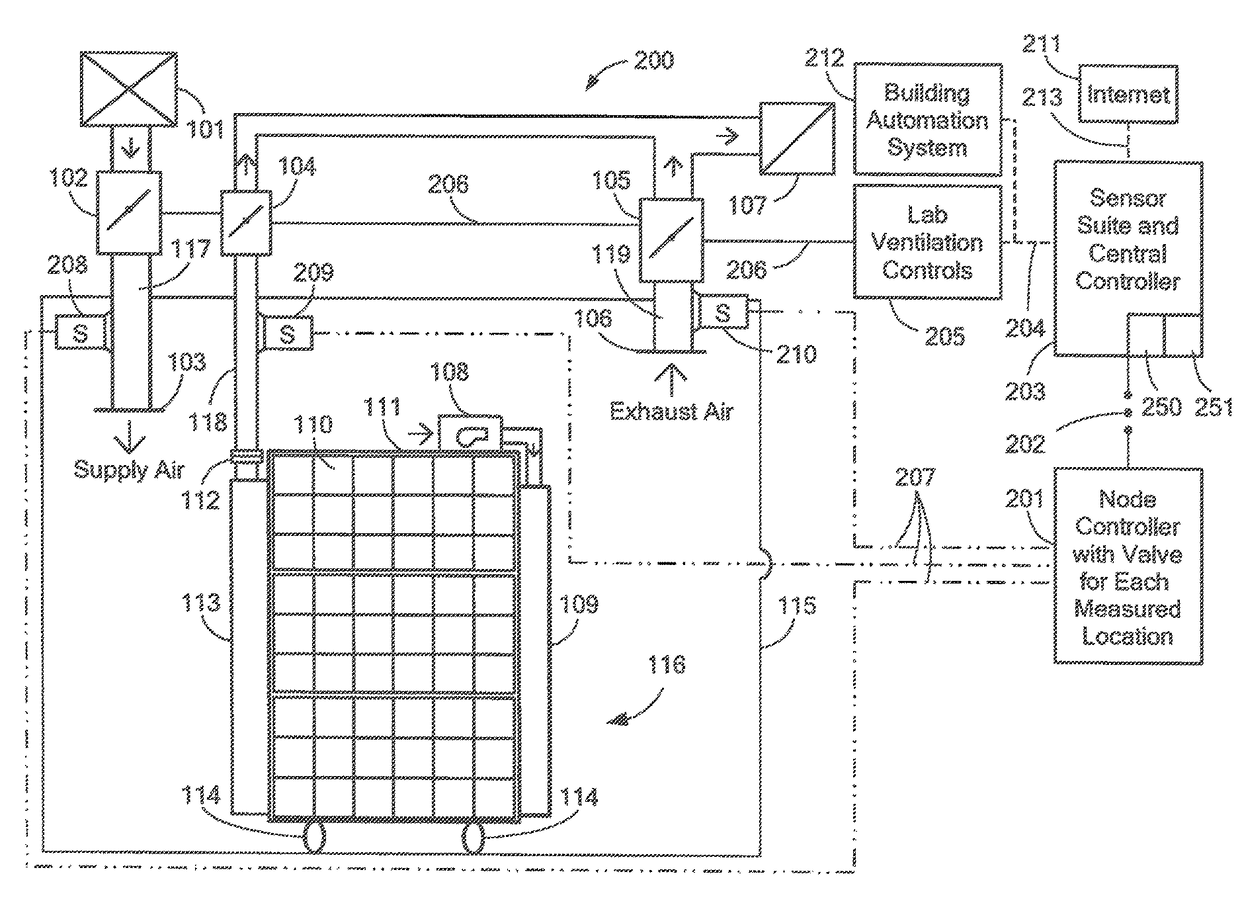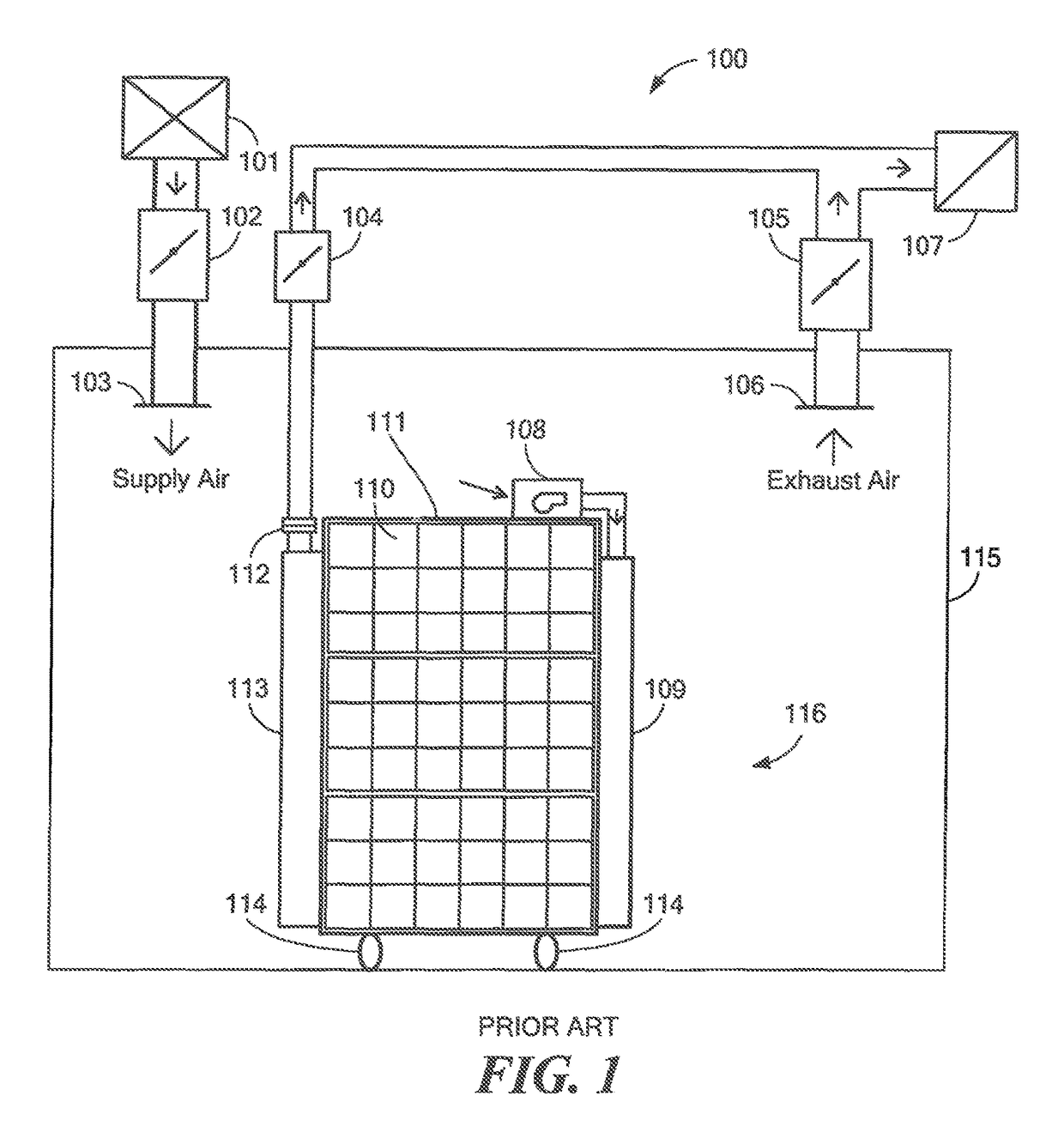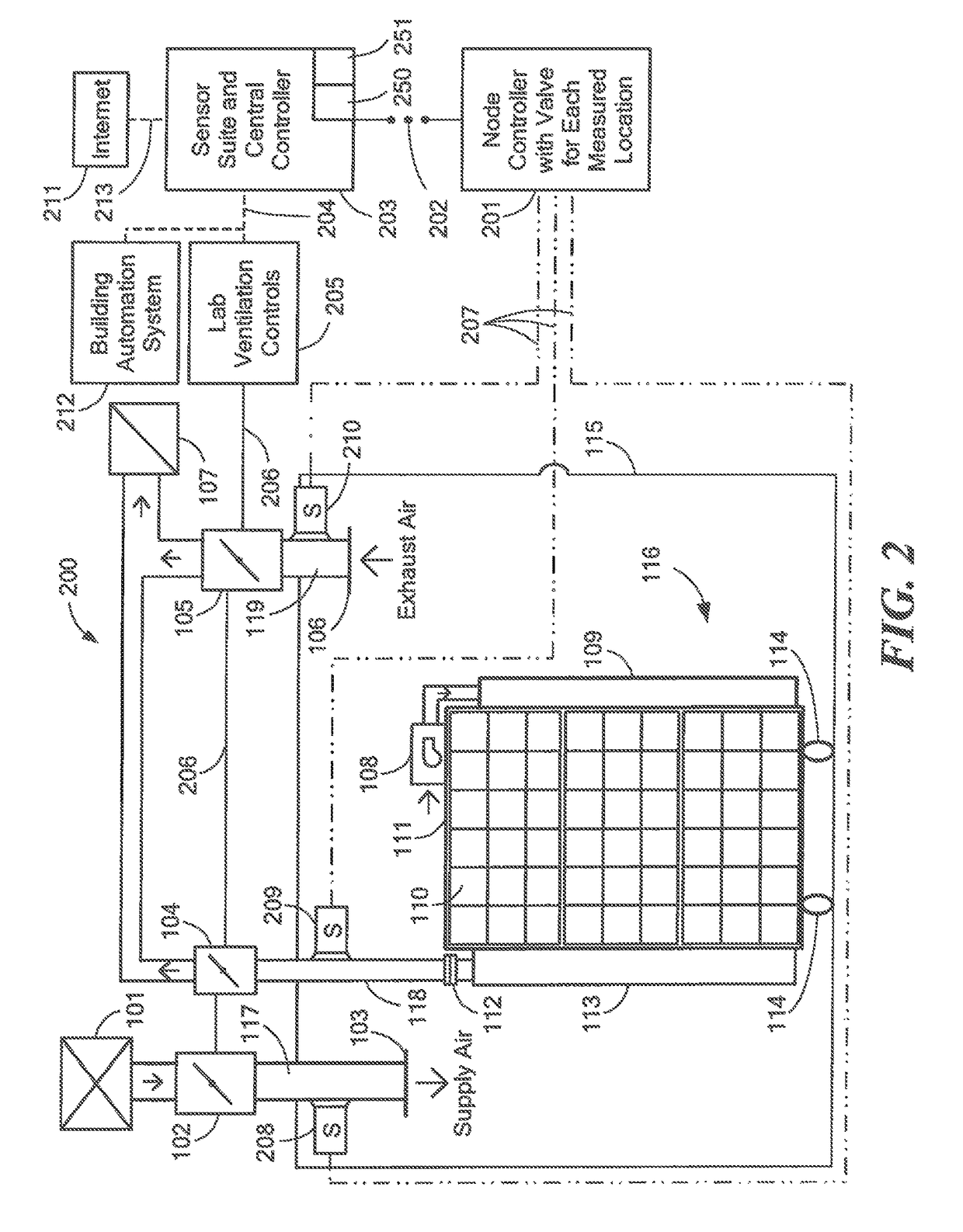Air sampling system providing compound discrimination via comparative PID approach
a sampling system and compound technology, applied in lighting and heating apparatus, instruments, heating types, etc., can solve the problems of frequent calibration of pids designed for handheld units, rarely applied pids, and inability to be permanently installed in order to provide continuous monitoring or signals,
- Summary
- Abstract
- Description
- Claims
- Application Information
AI Technical Summary
Benefits of technology
Problems solved by technology
Method used
Image
Examples
Embodiment Construction
[0046]In general, exemplary embodiments of the invention provide a multipoint air sampling system which utilizes at least two photoionization detectors (PIDs) having lamps which expose the electrodes for each sensor with different light energies or wavelengths in such a way to ensure that one PID is capable of ionizing a broader range of compounds than the other. It is understood that the air sampling system can be provided in any suitable configuration. In an exemplary embodiment, a networked air sampling system can include features described in U.S. Pat. No. 6,125,710 along with the duct probe assembly system described in U.S. Pat. No. 7,421,911 (both of which are herein incorporated by reference) to deliver air samples to the PIDs having different lamp energies. The teachings of U.S. Pat. No. 6,125,710 enable highly accurate measurements to be made with a PID, with minimal tolerance stacking errors between measured locations, which is useful given the comparative function that is...
PUM
| Property | Measurement | Unit |
|---|---|---|
| photonic energy | aaaaa | aaaaa |
| photonic energy | aaaaa | aaaaa |
| ionization potential | aaaaa | aaaaa |
Abstract
Description
Claims
Application Information
 Login to View More
Login to View More - R&D
- Intellectual Property
- Life Sciences
- Materials
- Tech Scout
- Unparalleled Data Quality
- Higher Quality Content
- 60% Fewer Hallucinations
Browse by: Latest US Patents, China's latest patents, Technical Efficacy Thesaurus, Application Domain, Technology Topic, Popular Technical Reports.
© 2025 PatSnap. All rights reserved.Legal|Privacy policy|Modern Slavery Act Transparency Statement|Sitemap|About US| Contact US: help@patsnap.com



